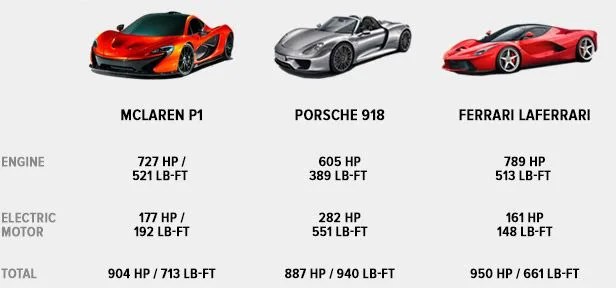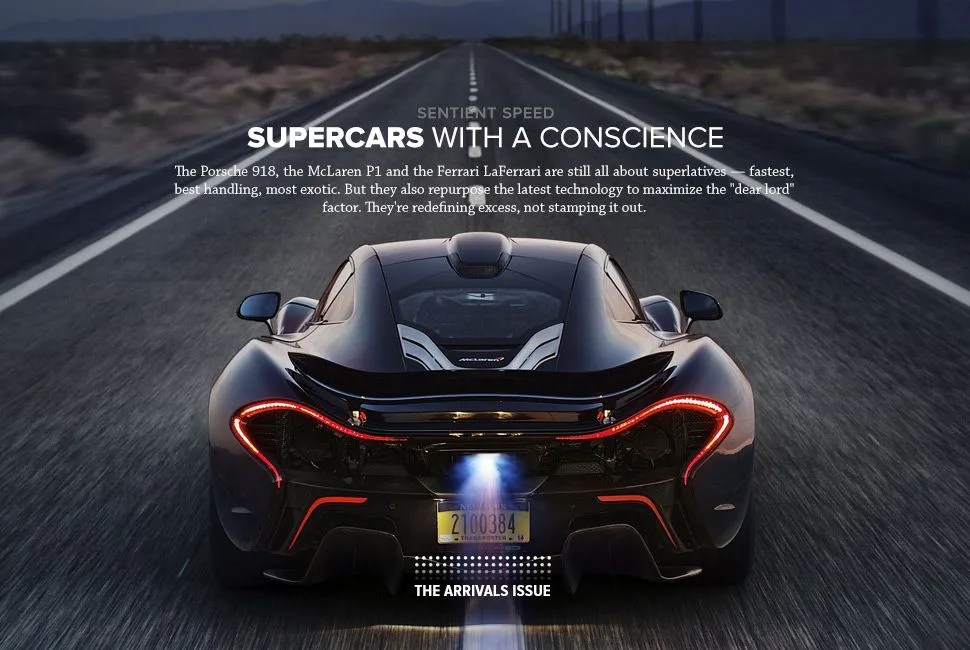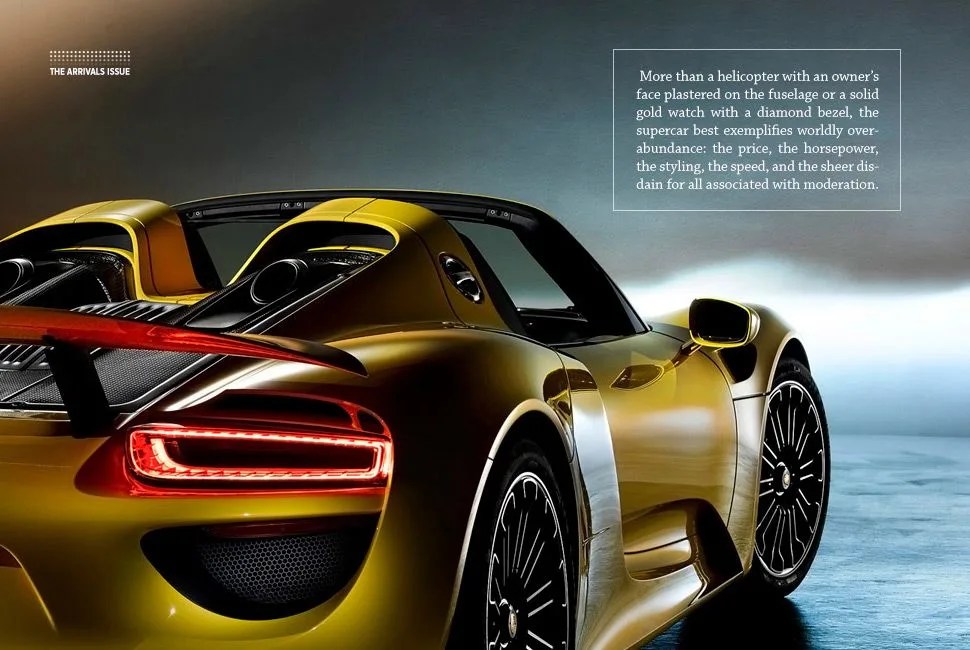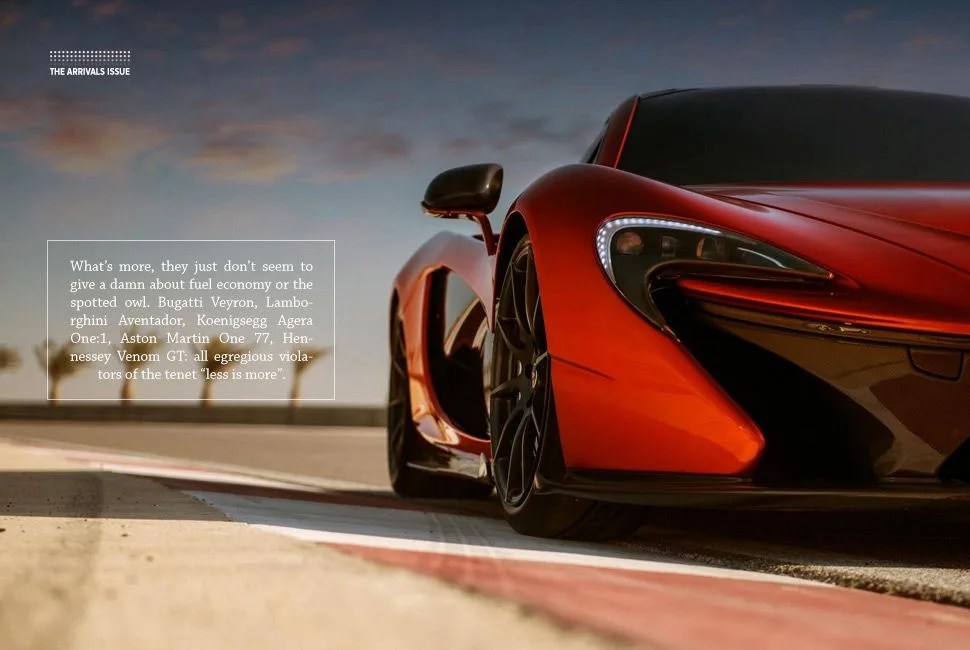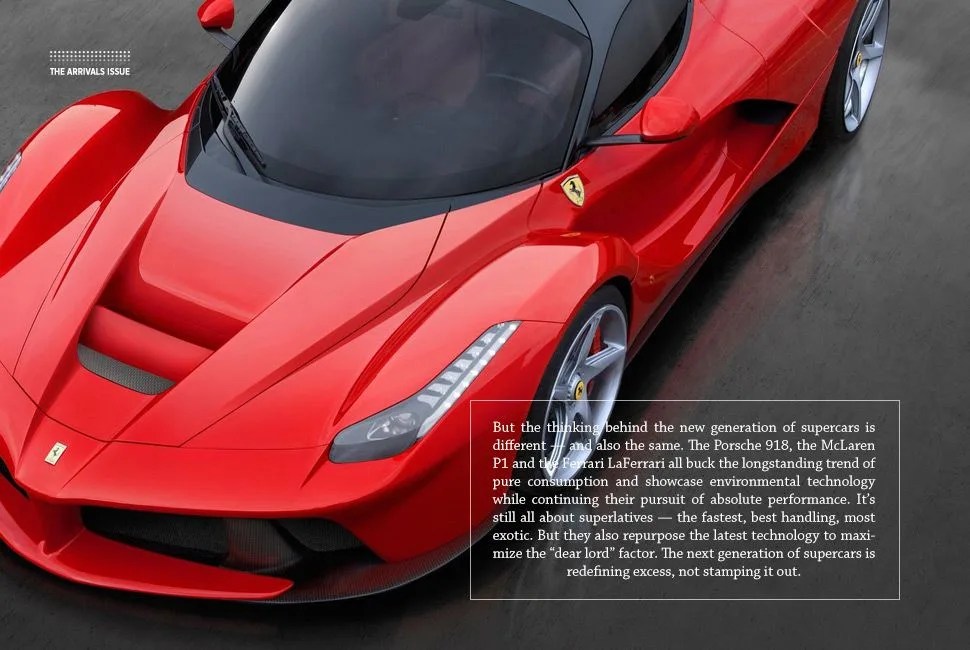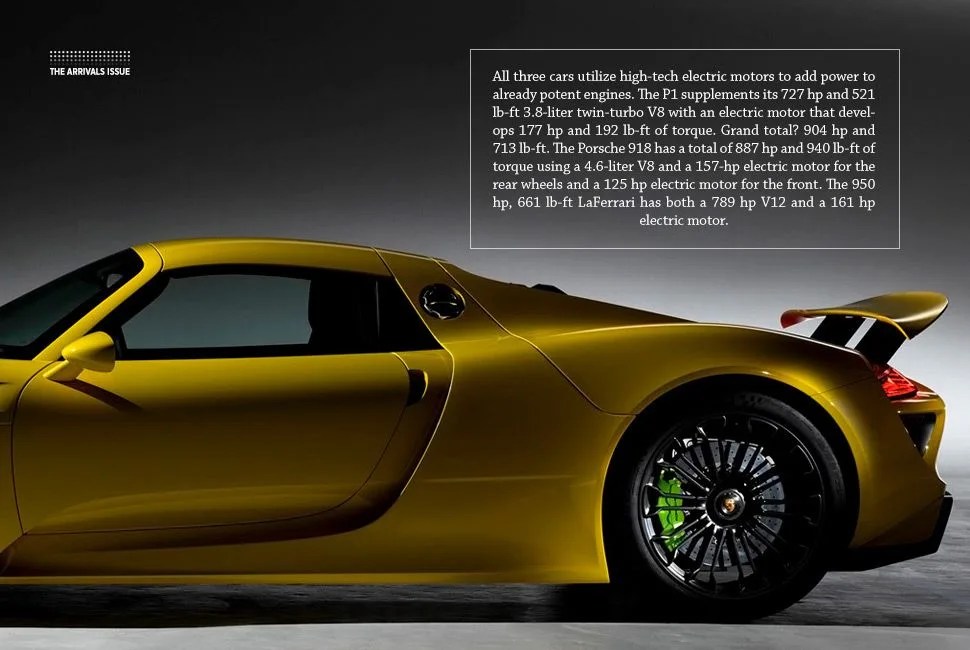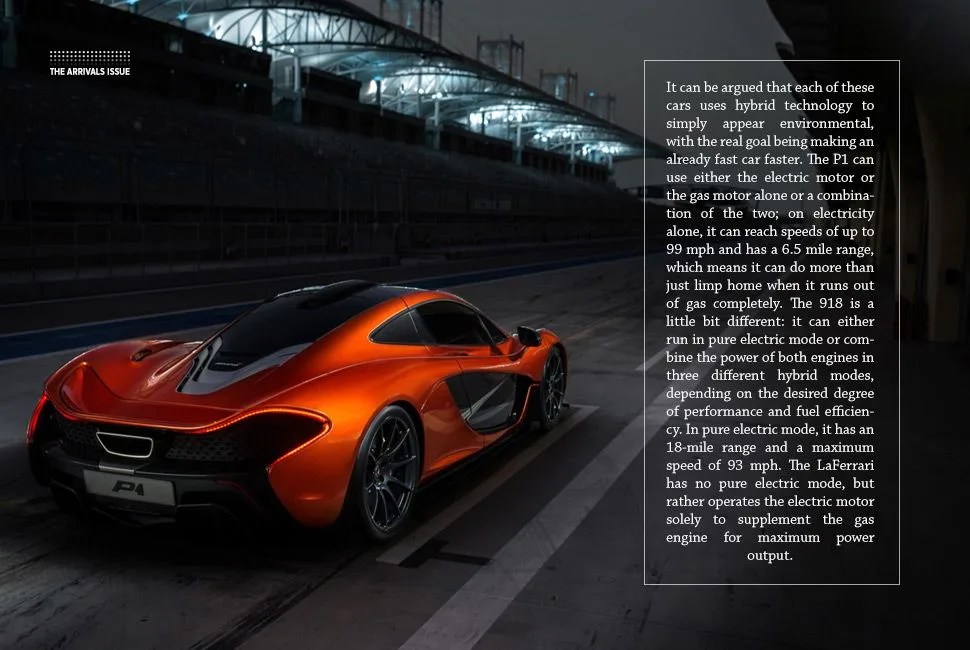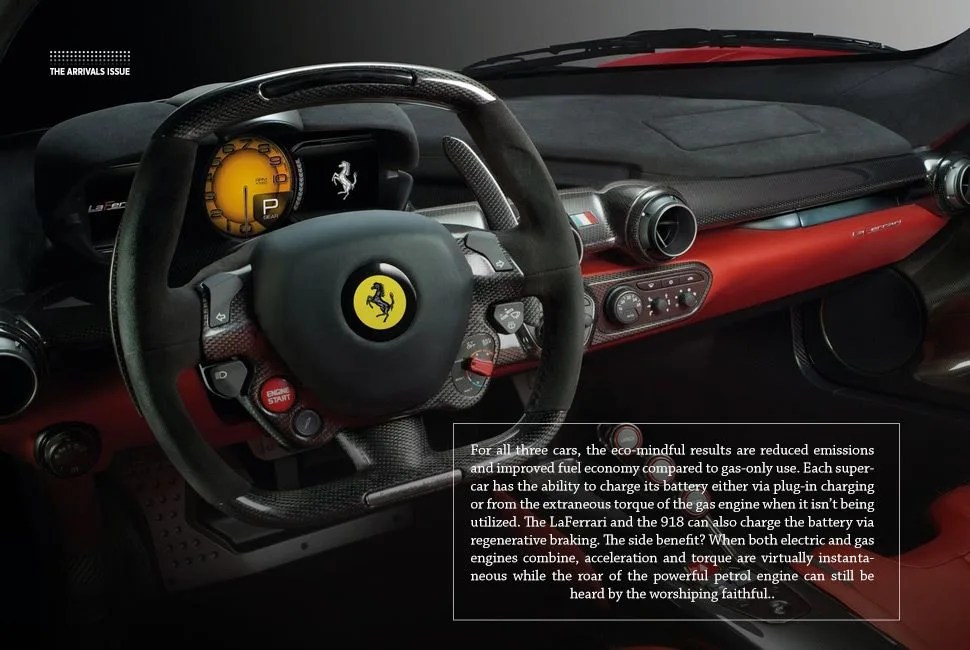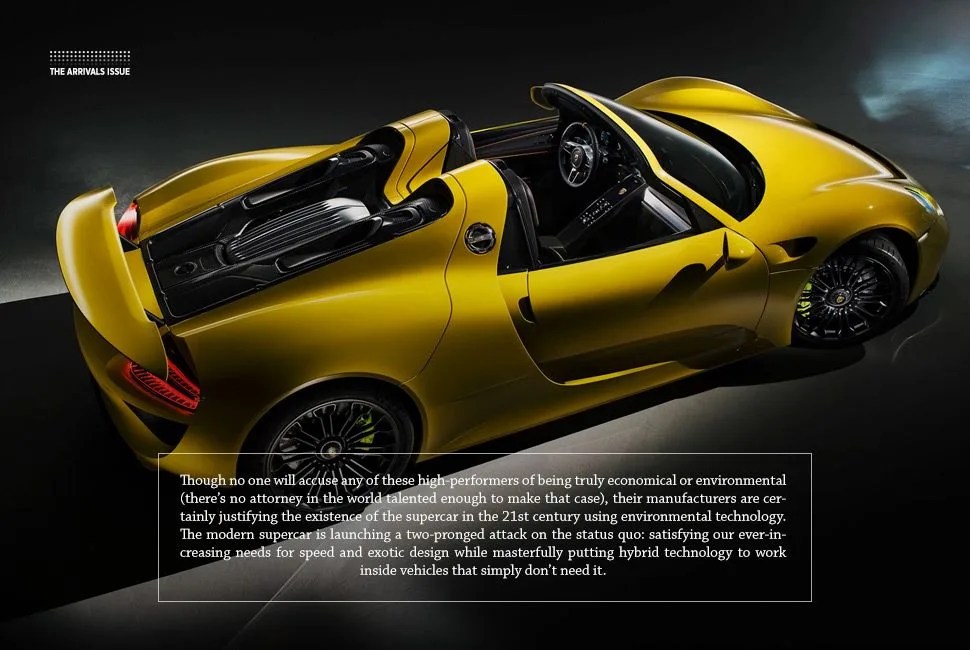8 photos
Excess is the soul of the supercar. More than private helicopter with an owner’s face plastered on the fuselage or a solid gold watch with a diamond-encrusted bezel, the supercar best exemplifies worldly overabundance: the price tag, the horsepower, the styling, the speed, and the sheer disdain for all associated with moderation. What’s more, none of them seem to give a damn about fuel economy or the spotted owl. Bugatti Veyron, Lamborghini Aventador, Koenigsegg Agera One:1, Aston Martin One 77, Hennessey Venom GT: all egregious violators of the tenet “less is more”.
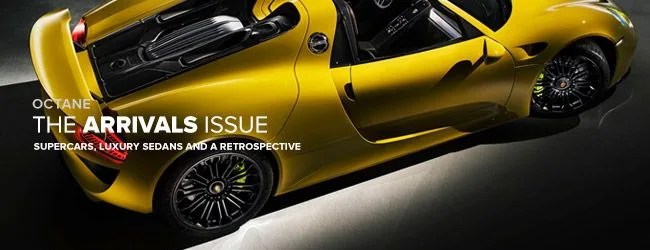
But the thinking behind the new generation of supercars is different — and also the same. The Porsche 918, the McLaren P1 and the Ferrari LaFerrari all buck the longstanding trend of pure consumption and showcase environmental technology while continuing their pursuit of absolute performance and stratospheric costs. It’s still all about superlatives — the fastest, best handling, most exotic. But they also repurpose the latest technology to maximize the “dear lord” factor. The next generation of supercars is redefining excess, not stamping it out.
All three cars utilize high-tech electric motors to add power to already potent engines. The P1 supplements its 727 hp and 521 lb-ft 3.8-liter twin-turbo V8 with an electric motor that develops 177 hp and 192 lb-ft of torque. Grand total? 904 hp and 713 lb-ft. The Porsche 918 has a total of 887 hp and 940 lb-ft of torque using a 4.6-liter V8 and a 157-hp electric motor for the rear wheels and a 125 hp electric motor for the front. The 950 hp, 661 lb-ft LaFerrari has both a 789 hp V12 and a 161 hp electric motor.
Hybrids, Perfected
